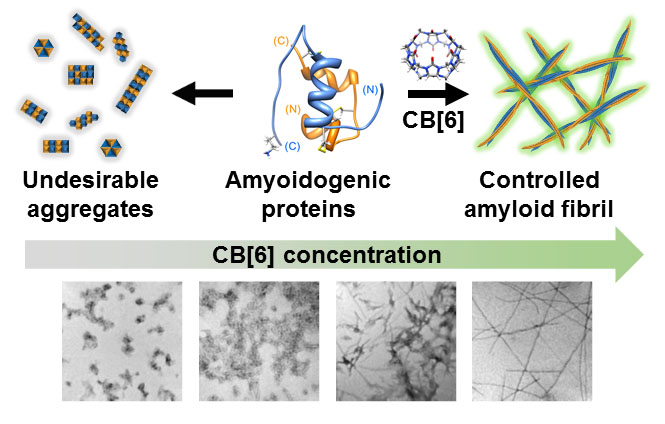Amyloid fibrils have recently been highlighted for their diverse applications as functional nanomaterials in modern chemistry. However, tight control to obtain a targeted fibril length with low heterogeneity has not been achieved because of the complicated nature of amyloid fibrillation. Herein, we demonstrate that fibril assemblies can be homogeneously manipulated with desired lengths from ~40 nm to ~10 μm by a phase transfer of amyloid proteins based on host-guest chemistry. We suggest that host-guest interactions with cucurbit[6]uril induce a phase transfer of amyloid proteins (human insulin, human islet amyloid polypeptide, hen egg lysozyme, and amyloid-β 1–40 & 1–42) from the soluble state to insoluble state when the amount of cucurbit[6]uril exceeds its solubility limit in solution. The phase transfer of the proteins kinetically delays the nucleation of amyloid proteins, while the nuclei formed in the early stage are homogeneously assembled to fibrils. Consequently, supramolecular assemblies of amyloid proteins with heterogeneous kinetics can be controlled by protein phase transfer based on host-guest interactions.

https://www.nature.com/articles/s41598-017-06181-4
 Quantum optical measurements with undetected photons through ...
Quantum optical measurements with undetected photons through ...
 A Mitochondria-targeted Cryptocyanine-Based Photothermogenic ...
A Mitochondria-targeted Cryptocyanine-Based Photothermogenic ...

















